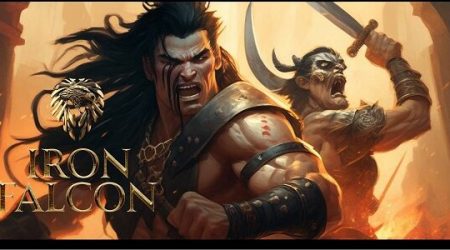5 Tips on Writing: With Mario Mergola
It’s-a me, Mario! But really, it is. I’ve been a narrative designer for the past five years, professional writer for roughly a decade, and I have written at least 750 words for the past 3,900 consecutive days. If you’re looking for some tips on writing, I’m here to share my insights and experiences with you.
That last part sounds like a joke. It isn’t. Writing is part of who I am. Sometimes, I write nonsense just to keep the streak alive. Other times, I use my daily entry for articles, design documents, or game scripts.
Over the years, I’ve had my content featured on a variety of websites and projects, including Pandora: Chains of Chaos, Ascend (in progress), Lucid Nightmare, Seeing is Deceiving, Protector, FantasyPros, ESPN Radio, AOL, Pickwatch, Examiner, and my own website, Sporfolio.
I do not have a brother named Luigi.
How to Hook Best
Keep the eyes moving.
Sometimes, we can do that by formatting paragraphs strangely.
And keeping them short.
Because even the most avid readers will see a block of text and try to gauge if it’s worth it to dig through every word or skim for the critical points.
Even if someone chooses to actively engage with one word after the next, the flow and rhythm have changed. Maybe that’s for the best. Here, I did it to prove a point.
This also speaks to the adage of knowing your audience, but it’s really to know your medium, know your genre, know your intent, know your message, etc.
You send emails to your friends with a far different tone than you would a stranger when making an introduction. Take that same approach with all types of writing. Don’t throw intrusive dialogue in the way of an action-based game — this is why barks are so effective.
Break grammar rules when you can. You aren’t just throwing the hook into the pond. You’re sprinkling the bait and waiting for the fish to move toward it. Keep them moving in the right direction.
Read Also:- Twist Tales – The Best Interactive Audio Books
Developing Plots
Always think about pacing. It is the most critical piece of game writing, and it belongs at the forefront of plot development.
We need to know how the player can interact with the world and how much time will be allotted for this to happen.
And we need to know what is an acceptable disconnect from reality.
An NPC might tell the player-character that her house is on fire and there’s a child trapped inside.
Does the player need to go directly to the house? Will it remain burning for as long as it takes for the player to complete the objective? What happens if the player never rescues the child or puts out the fire?
Questions like those need to be asked and answered so that the plot can form properly. The story exists in service to the game, so develop it around the path the player will take throughout the experience.
Building Worlds
Remember that games are built by teams. The writer may be tasked with “world-building” but it’s a deceiving term to assign to one person.
The world of a game exists because of the collaboration of multiple parties and disciplines. It’s there, it’s just incomplete.
That’s the job. Complete the world.
If you view it that way, you can start to see that it’s an unfinished painting with rules — can’t go outside the border — established foundations — can’t erase the framework — and multiple paintbrushes being used at once — can’t ignore the work of others.
It’s your job to complete the painting by following the parameters and, if you do, you won’t just deliver a fully-realized world. You’ll earn the respect and appreciation of your teammates.
That doesn’t get talked about nearly enough when it comes to world-building. But don’t forget that it is one of the most collaborative elements of narrative design and game writing.
Creating Characters
Talk in the character’s voice, even if it’s in your head.
Give an accent or visualize the character — concept artists are to be treasured! — and hear how they deliver their messages. Sternly? With darting eyes? Do they stand taller when speaking?
I use facial expressions when I write. If the character is serious or angry or intense, I furrow my brow. If the character is suspicious, I narrow my eyes.
Everybody has their own method of how to get inside the character’s mind and heart, but that’s the goal.
Find your way in and write from their emotions.
This isn’t confined to dialogue, either. Here’s an example of what I would write in a game design document about a young boy who would be described as petulant with bouts of anger: He just can’t quite accept that his aunt might have a reason for being overprotective.
Somewhere in the document, it will say that he’s petulant. Somewhere else, it will mention his aunt. For those on the team who only need the facts, they can find them and move on. But if someone was looking for an emotional connection, they found it in one line about his relationship with his aunt.
And I probably wrote that with a sullen look on my face.
Creating Meaningful Choices
Timing.
Build up the weight of the decision beforehand and then strike when it matters most. When it’s inconvenient or impossible to consider or will undoubtedly set off a series of game-altering events.
And then wait.
Give the initial feedback and consequences so the player knows what impact was made. But wait on the rest.
Wait for the right time.
Later in the game.
And then strike with the underlying consequence that wasn’t spelled out but also fits the characters involved.
Time it right, and every choice thereafter will be meaningful.
Games Mario has Worked on
I was the narrative designer on Pandora: Chains of Chaos — released in September of 2020 — and Ascend — currently in progress. I also wrote and programmed Lucid Nightmare, Seeing is Deceiving, and Protector, and I am quietly working on a few more, both as a solo developer and as part of a team.
There are never too many stories to tell, and I am always open to collaboration.
Mario's Strengths in Writing and Narrative Design
Welcoming the challenge of solving a puzzle through narrative design.
I love writing. I love games. I love puzzles. I love loving — it’s important to be passionate about anything that brings you joy!
Game development is a wild, messy scene. Ideas are everywhere. Influences arise from something someone recently played, watched, or read. It’s a madhouse of creativity, and someone has to find the emotional experience within the chaos.
That’s what I love.
Working with designers, programmers, artists, etc., and teasing out the key elements to make sure they fit into the puzzle.
And the writing is how I unveil that puzzle.
Tips on Writing: Mario's Favorite Story
Armageddon has been my favorite movie for decades, and I can watch it repeatedly and never get tired of the story.
There’s the overarching theme of survival, but it’s beyond the borders of any country. Earth, as a living being, is trying to survive.
Then there’s the love story. But there are two. Paternal and romantic. And how they intersect with each other.
Finally, the themes of sacrifice, loyalty, and the underdog challenge are carried throughout the experience. These are so powerful, and they work in a story where each one can take the lead but still be overshadowed by the main primal need to survive.
Armageddon probably marked the end of my pre-storytelling life.
If Mario Could Wish for an Interactive Audio Story
It would absolutely be Mass Effect or a story set in the same type of universe. There’s something about the dichotomy of space where it is so vast and yet so confined at the same time. The universe — literally — is infinite. The setting for our characters, however, is usually tight and suffocating.
That story can definitely be delivered through audio, and it would be captivating. There are endless opportunities for how characters could interact with new worlds, and the listeners’ imaginations can run wild.
Put characters I love into a space drama, and I’ll be hooked.
Mario's Best Tip on how to Start a Project as a Narrative Designer
Ask questions. Be genuinely curious. Find out the roles of the people and the people behind the roles.
The latter is necessary for collaboration. Working with colleagues in other departments isn’t always easy, but you can bridge the gap by creating trust on a person-to-person level. That way, when the feedback arrives in either direction, both parties know they are acting in the best interest of one another.
As for the roles of the people, it’s important to ask as much as possible so you can sketch out the core of the story. Try these:
”What are you working on?“ – Simple, wide open, and will allow the person to share to their own comfort level.
”What do you expect the player to do?“ – Maybe there’s some insight here that you didn’t consider, but it’s more likely that you can get clarity of how a designer, programmer, artist, etc. envisioned the experience. If you can, match it.
”What are the actions the player will take?“ – Give me everything. Can the player jump? Climb? Spontaneously combust? We need to know so we can include it in our story or design documents.
”How big is the map?“ – Pacing is one of the most challenging aspects of narrative design, and knowing the extent of the world can help hone in on the possibilities. Even if it were an interactive fiction, we need to know the ”map“ – how much range and freedom the player might have.
”What about the game cannot change?“ – Trick question. Everything can change. Everything. Not always at any point in development, that’s not why we should ask this question. We want to know what others consider core elements. Remember, the emotional experience of the game is our puzzle to solve, but it’s helpful to know the image other people expect to see in the end – even if we change it.





